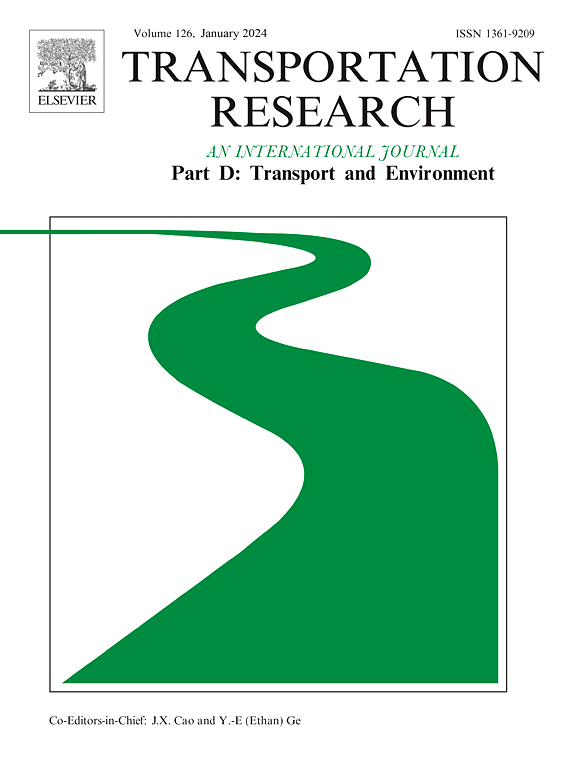公交投资和最初的社区属性对城市化结果的影响
IF 7.3
1区 工程技术
Q1 ENVIRONMENTAL STUDIES
Transportation Research Part D-transport and Environment
Pub Date : 2024-11-05
DOI:10.1016/j.trd.2024.104463
引用次数: 0
摘要
本研究探讨了新的城市轨道交通线路和邻近的开发项目会给居民区带来哪些不成比例的社会经济变化,以及这些变化是否会因居民区类型的不同而有所差异。根据线路公布前的社会经济特征,我们制定了一个指数,将居民区分为三类。通过准实验计量经济学框架,按社区类别估算出不同时期的平均处理效果。计量经济学模型针对五个因变量和四个时间段进行估算。计量经济学框架适用于北卡罗来纳州夏洛特市的轻轨线路,并通过两个对照组进行分析,以评估结果的稳健性。结果表明,与对照组相比,社会经济指数较低的居民区由于轻轨线路的开通而发生了巨大的变化,指向绅士化,而在社会经济指数中等的居民区,轻轨线路主要影响的是房产价格。本文章由计算机程序翻译,如有差异,请以英文原文为准。
The role of transit investments and initial neighborhood attributes on gentrification outcomes
This research explores the disproportionate socioeconomic changes that neighborhoods undergo due to a new urban rail line and adjacent developments and whether these changes differ by neighborhood type. An index is developed to classify neighborhoods into three categories based on their socioeconomic characteristics prior to the line announcement. Average treatment effects are estimated by neighborhood category and over time through a quasi-experimental econometric framework. Econometric models are estimated for five dependent variables and four time periods. The econometric framework is applied to the light rail line in Charlotte, NC, and the analysis is conducted with two control groups to assess the robustness of the results. The results indicate that neighborhoods with a low socioeconomic index experienced large changes pointing towards gentrification due to the light rail line in comparison to the control groups, while in neighborhoods with medium socioeconomic index, the light rail line primarily impacted property prices.
求助全文
通过发布文献求助,成功后即可免费获取论文全文。
去求助
来源期刊
CiteScore
14.40
自引率
9.20%
发文量
314
审稿时长
39 days
期刊介绍:
Transportation Research Part D: Transport and Environment focuses on original research exploring the environmental impacts of transportation, policy responses to these impacts, and their implications for transportation system design, planning, and management. The journal comprehensively covers the interaction between transportation and the environment, ranging from local effects on specific geographical areas to global implications such as natural resource depletion and atmospheric pollution.
We welcome research papers across all transportation modes, including maritime, air, and land transportation, assessing their environmental impacts broadly. Papers addressing both mobile aspects and transportation infrastructure are considered. The journal prioritizes empirical findings and policy responses of regulatory, planning, technical, or fiscal nature. Articles are policy-driven, accessible, and applicable to readers from diverse disciplines, emphasizing relevance and practicality. We encourage interdisciplinary submissions and welcome contributions from economically developing and advanced countries alike, reflecting our international orientation.

 求助内容:
求助内容: 应助结果提醒方式:
应助结果提醒方式:


